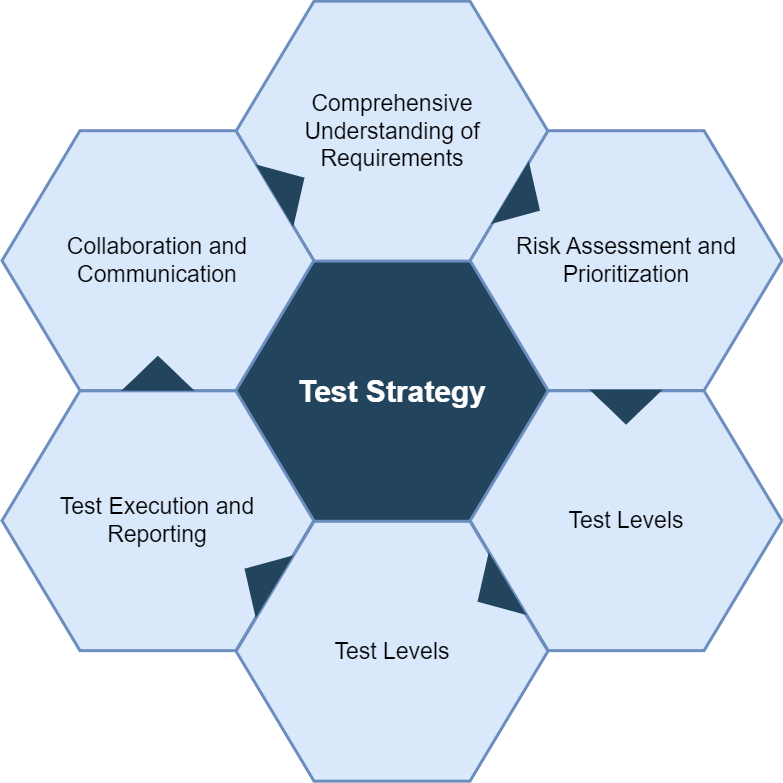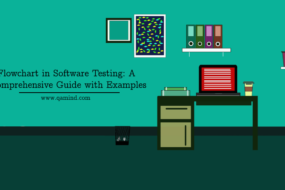
Introduction
Software testing is an important part of the STLC because it ensures that applications meet the standards. In order to do that you need a well-defined software test strategy. The goal is to improve the overall quality assurance process within the organization, identify defects as much as possible and enhance reliability.
However, creating a robust software test strategy is not a small task. It requires careful consideration of various factors to ensure comprehensive coverage and efficient testing. In this blog post, I will show you the essentials you need to cover before embarking on the creation of a successful software test strategy.

Comprehensive Understanding of Requirements
If you are familiar with the QA process in general, you probably know by now that before doing any software testing activity you need some kind of plan, analysis, or design. In this case, before writing a software test strategy, you need to gather and clarify all the necessary customer requirements. What does this include you may wonder? Well, functional, non-functional testing for starters. Clearly defining the scope and objectives of the software under test will lay the foundation of an effective software testing strategy but not only that. It will also set the ground basis for the software test automation strategy as well.
Risk Assessment and Prioritization
As with any planning comes a risk so a comprehensive risk assessment is a crucial step in creating the strategy. Here you need to identify any potential risks and their impact on the functionality, security, performance, and usability. Prioritization should occur based on the severity and the likelihood of the risk happening, ensuring that the high-risk areas get the most attention during testing. That way you can ensure that the resource allocation process is handled accordingly and the test effectiveness is achieved.
Test Levels
In any software test strategy, defining the test levels is the core process and it needs to be established early. When I talk about test levels I mean the 4 main testing levels:
- Unit testing
- Integration testing
- System testing
- Acceptance testing
Each of the levels serves a unique purpose and ensures that defects are identified and mitigated early in the development stages. Additionally defining how many tests should you have per level is also crucial to your overall QA process.
Test Environment and Data
What good are the test types if you don’t have any environment to perform testing? Determining the test environment is another crucial part of the software test strategy. Here you need to keep in mind the hardware. software, network configurations, storage, data accessing, virtualization, etc. This can easily be the most costly part so aligning the budget and team expertise with the project’s requirements is a must.
Defining test data plays a vital role in covering all of the scenarios. Creating both, positive and negative scenarios based on the input data is a preferred way to be able to achieve a high percentage of test coverage. Here you need to consider how data is created, generated, extracted, and used in testing and in the reports as well.
Test Execution and Reporting
How to execute tests is another core concept. Defining the test schedule, how many test cycles per day/week should you have and do you need to follow any test execution techniques is something that you need to clarify and establish. One idea would be to consider executing tests based on their prioritization or you can also choose to run your tests in parallel or maybe do an automated regression test after every new build etc. Regardless of which option you choose, you need to take care of the reporting at the end of execution since that is the place where we get results from the tests.
Collaboration and Communication
Last but not least, is the communication between team members. Often forgotten by many teams, communication plays a vital role in ensuring a high-quality software product. Try to define the channels and tools for communication and ensure that the information flows seamlessly. Encourage collaboration between testers, developers, and business analysts and create a shared understanding of the end goals.
Last few words
I get it, it’s not an easy task especially if you don’t have experience in creating a strategy from scratch. Try to look at this from a different perspective. You will gain a lot of new knowledge you think you had, you will enhance the communication and collaboration with the team and you will be directly responsible for the improved quality of the product overall. Remember that adaptability and continuous improvements are key.












